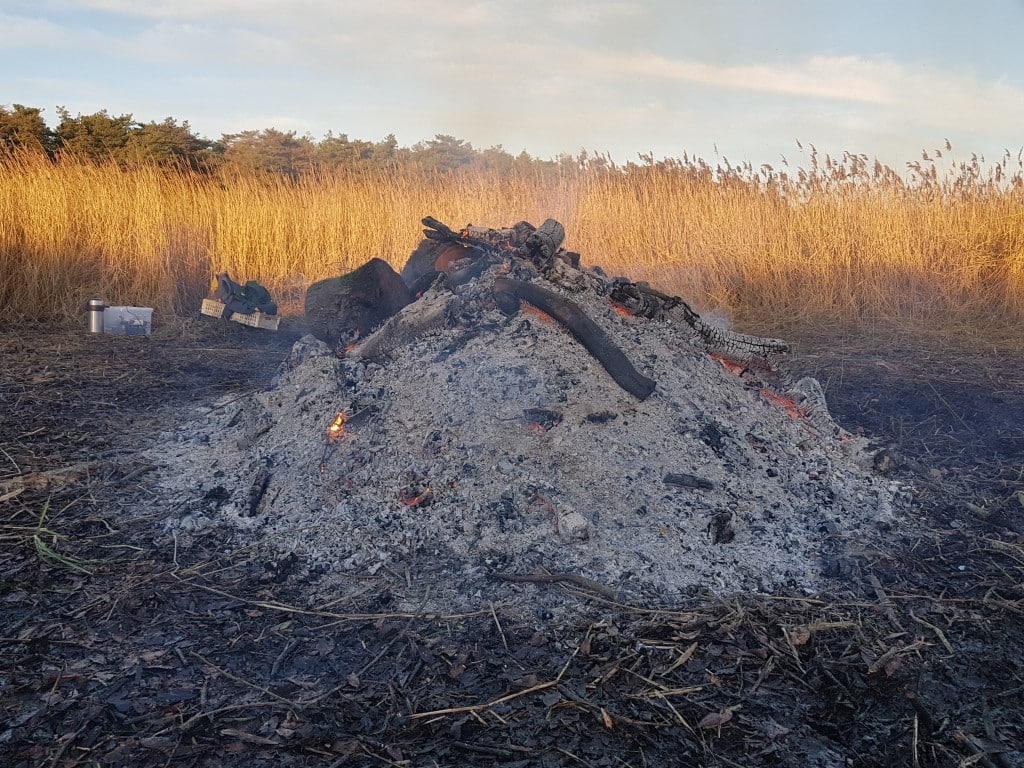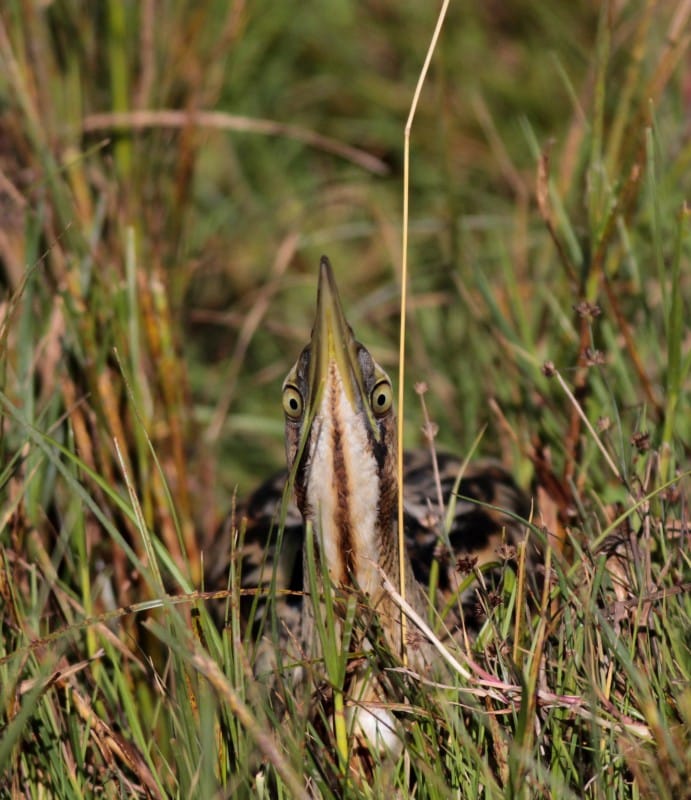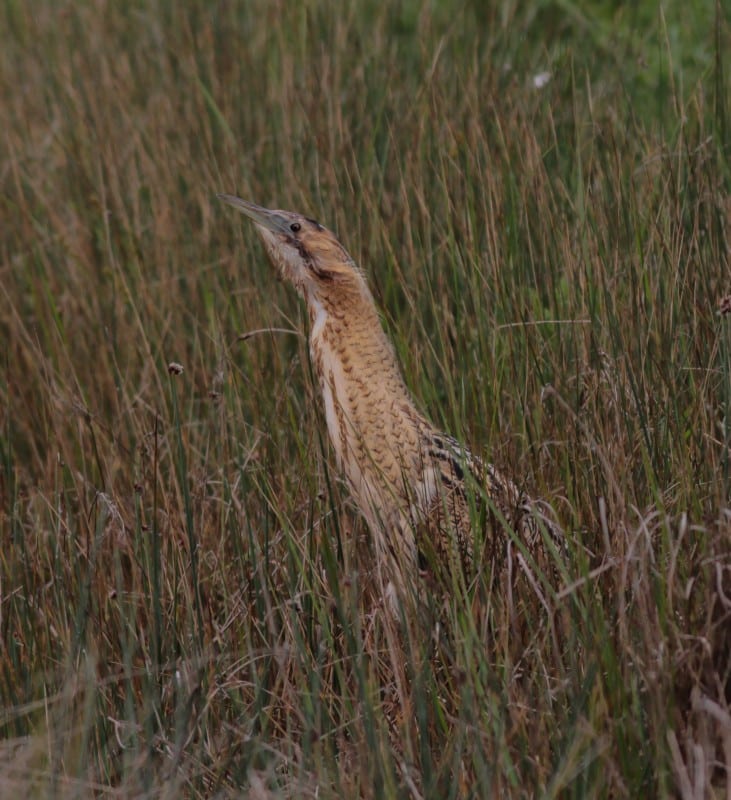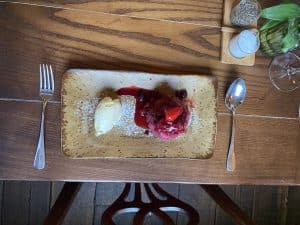Managing reedbed at Holkham National Nature Reserve
April 9, 2019 | Learning | 8 minute read
This winter we have been spending much of our time working to improve the reedbed areas across the National Nature Reserve (NNR). A very important task to maintain the habitat in good condition and so providing the perfect home so some of our rarer wildlife.
History
Vast wetlands including reedbeds, fens and lakes once covered large areas of East Anglia especially in the Fens and the Norfolk Broads but with changes in land use and increased recreation, only small pockets remain. With the loss of the habitat comes the loss of key species. Birds such as the bittern and marsh harrier almost vanished as breeding species while otters and water voles have both declined. This makes it increasingly important to manage the areas that remain in the county; however small.
The largest areas of reedbed on the NNR can be seen from the Washington Hide at Holkham and the seawall at Burnham Overy while smaller patches are found at Burnham Norton.
Management
Traditionally reedbeds were managed to provide materials for the building industry. In some parts of the world, whole houses are made from reed but the most familiar use of is for thatching on the roofs of buildings. Managing reedbeds for thatching is still a big industry in the county especially along the North Norfolk coast and the Norfolk Broads but at Holkham we manage the reedbeds to provide the ideal habitat conditions for wide variety of wildlife.
The key to maintaining a good quality reedbed is making sure that the right level of management takes place. If it is left too long with no management, over time it will start to dry out and allow willow trees to take hold and before long to have a woodland instead of a reedbed. If it is too regularly, the reed will be all the same age which is not ideal for a wide range of species.
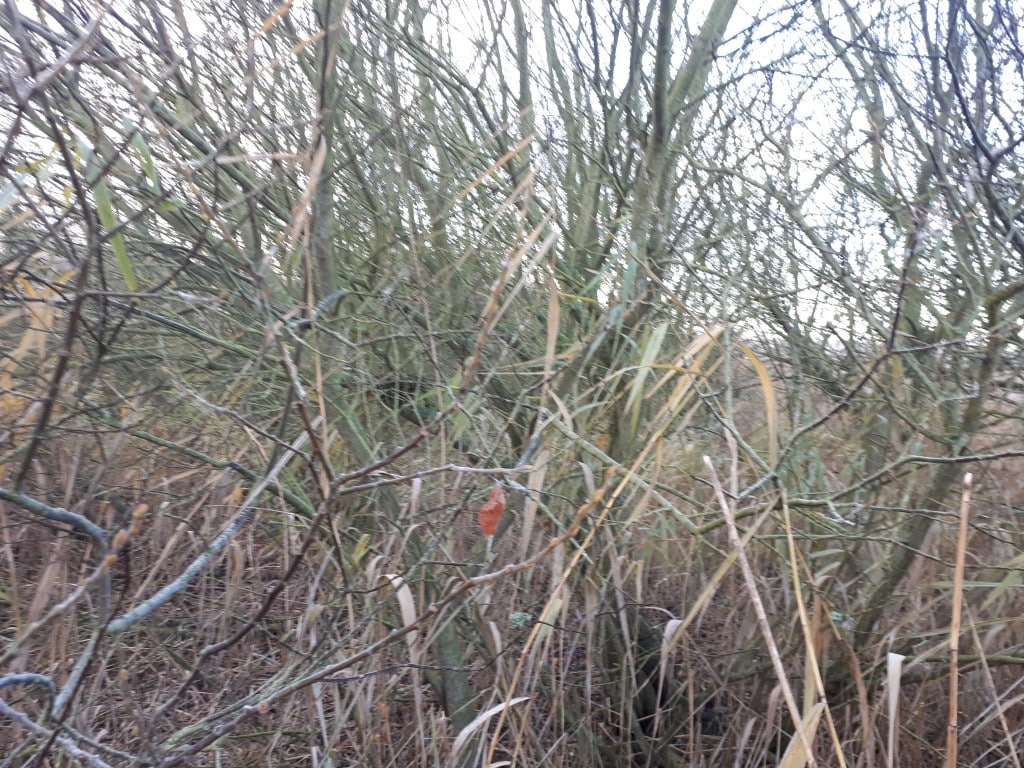
Willow scrub taking over the reedbed
The ideal management is cutting small blocks of reed on a 5-year rotational cycle. This ensures that there are younger reeds where bearded tits like to feed and older areas that are great for reedbed invertebrates and nesting bitterns.
The reed is cut using strimmers, mowers and where it is especially wet, amphibious machines can be used. The cut reed here is not good enough quality to be used by the thatching industry so we dispose of the cut material by burning. Once all of the reed has gone, we need to remove as much of the leaf litter as we can to ensure the area is wet as possible.
Our work this winter has focussed on the Meals House reedbed that can be viewed from the Washington Hide along the edge of the pines. Over the years willow has managed to get a foothold in the drier areas and begin to encroach over a larger area. In general, diversity of habitat is a good thing as it provides different niches for a wide range of species but once one species begins to take over, as the willow has in this case, you lose that diversity. As the willow scrub habitat is widespread throughout the NNR, we had decided to remove it from this area of reedbed.
The trees were taken out using chainsaws and the resulting brash was burnt using our volunteer team. Once completed, all of the stumps were chemically treated to prevent any regrowth. Water levels have now been increased in the reedbed and the cleared areas look excellent for attracting feeding bitterns that breed on the National Nature Reserve.
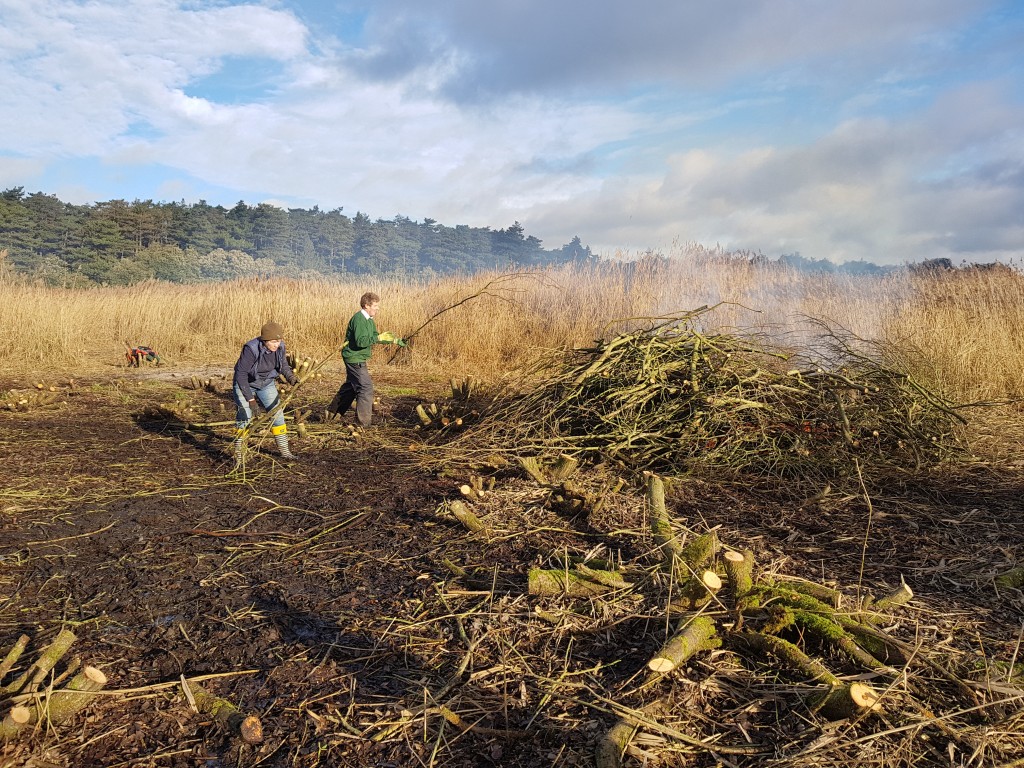
Volunteer work party
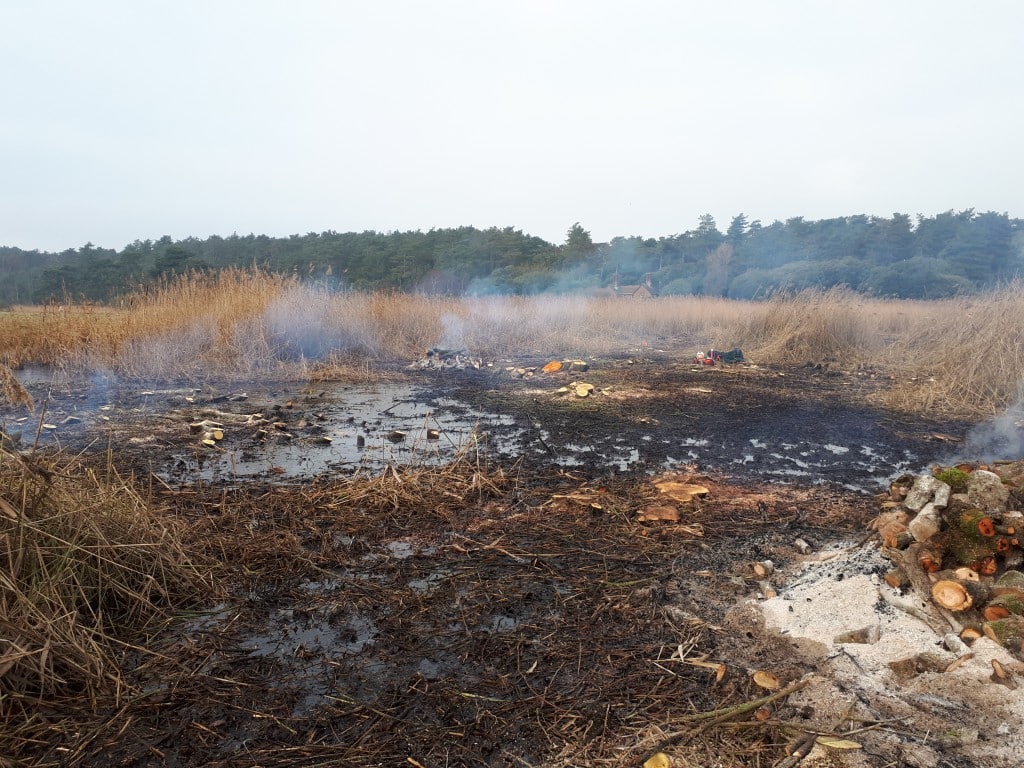
The just finished results
Key species
There are several charismatic species associated with reedbeds at Holkham, here are a few of them.
Bittern
• A member of the heron family that only breeds in reedbeds. Their brown stripy plumage makes ideal camouflage amongst the reeds.
• The best times to see a bittern are in the winter when cold weather forces them to feed along the edges of the reeds and the summer when the birds are feeding young.
• Only the female is involved in the breeding cycle once mating has taken place. The female does all of the incubation of the eggs and the feeding of the young!
• Listen out for the loud ‘booming’ song of the male (it sounds like blowing over the top of a bottle) between February and April. The far-carrying call can be heard several miles away on a calm evening. Listen out for ‘booming’ at Holkham from the Washington Hide and the seawall at Burnham Overy.
• The bittern has many different ‘local’ names from around the country including ‘barrel-maker’, ‘bog-bull’, ‘bog-hen’ and ‘bog-trotter’ but here in Norfolk it is known as the ‘butterbump’. Many of these names come from the call of the male.
• Following conservation work across the UK, the bittern population has risen from 11 ‘booming’ males in the late 1990’s to over 150 today.
Marsh harrier
• Now a common sight in the skies over Norfolk, these large birds of prey were once incredibly rare. In 1972 only 2 pairs remained in the UK, breeding on the Suffolk coast. The species has since recovered to over 400 breeding females in the UK with 100 of those in Norfolk alone. Up to 10 pairs breed on the reserve annually.
• Marsh harriers build their nests on the ground using a platform of reeds to raise the eggs above the water level. 4-5 eggs are usually laid in April with successful young leaving the nest in June.
• Marsh harriers feed on a wide variety of prey including young waterfowl, gamebirds and small mammals but can also been found feeding on invertebrates and carrion.
• Although most of the birds that breed in the UK head south to Africa for the winter, many birds now stay on their breeding grounds. At dusk they gather in a communal roost in the reedbed with up to 15 birds in the air together before dropping into the Meals House reedbed.
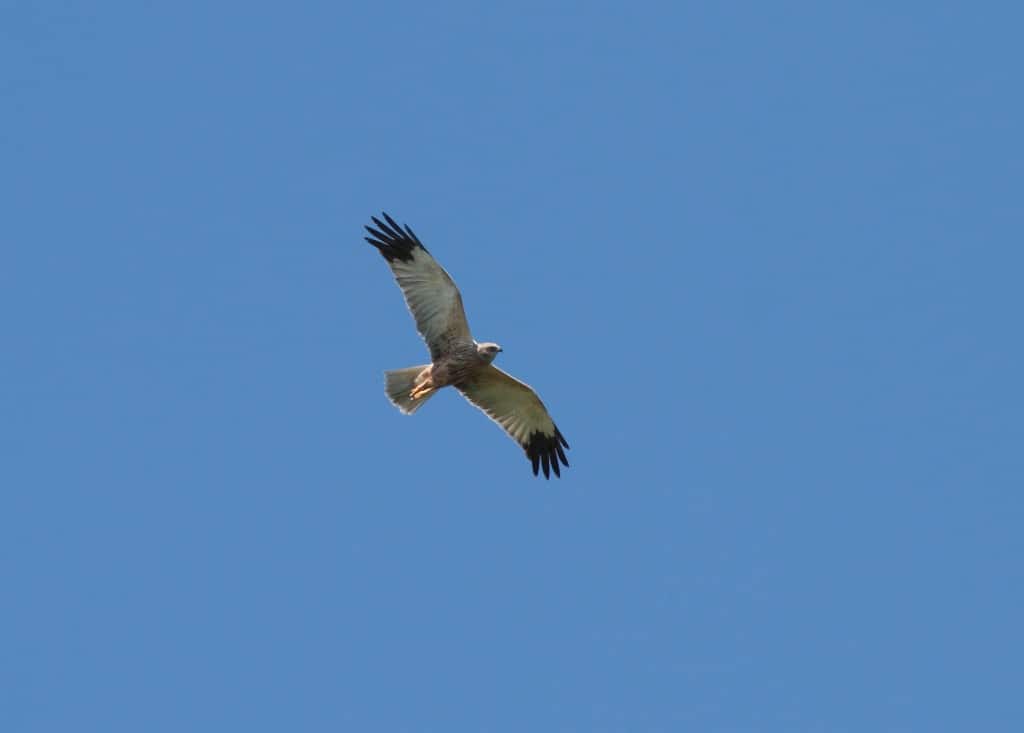
Male marsh harrier
Otter
• Once a rare sight, otters have made a real comeback in recent years. Having declined dramatically in the 1950’s, many of the traditional Norfolk sites no longer supported otters. Today however, they have returned to much of their former range.
• Although difficult to see, it is much easier to look out for their signs. Check muddy edges to ditches for their tracks and they like to use the same routes when travelling. Check obvious area such as bridges and pipes for spraints. Otters will mark out their territories with their own scent.
Water vole
• ‘Ratty’, made famous by Wind in the Willows, has sadly undergone a massive decline. Pollution, habitat loss and predation from introduced mink have seen the populations drop by 90%
• Although difficult to see, if you look closely you may be able to find signs of their presence. Little piles of nibbled vegetation or feeding platform on the water’s edge are a good sign. The voles swim out into the water, select a nice juicy piece of vegetation and take the back to a feeding platform where it sits and feeds. Latrines and burrows are also great signs of recent activity.
Listening out for a ‘plop’ as one drop into the water as you approach.
Invertebrates
• With over 700 species, reedbeds are massively important for invertebrates including 64 insect species that are entirely dependant on reedbeds.
View all latest blog posts here.
